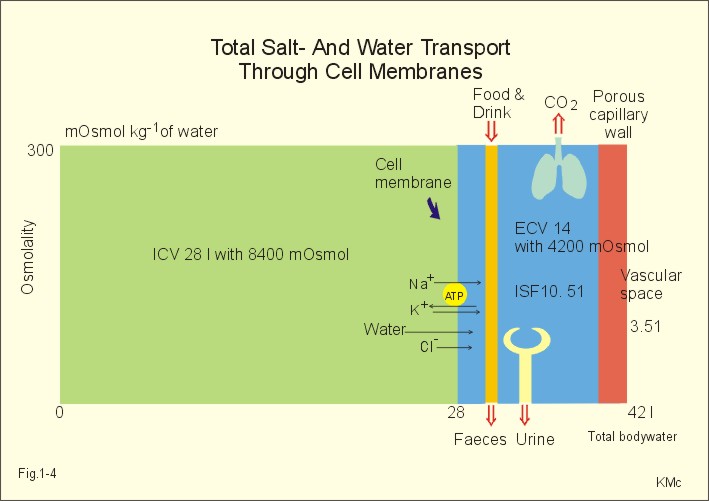
The hydrostatic pressure of blood is the pressure exerted by blood against the walls of the blood vessels by the pumping action of the heart. Hydrostatic pressure, the force exerted by a fluid against a wall, causes movement of fluid between compartments. (credit: modification of work by Mariana Ruiz Villarreal) Fluid Movement between Compartments The pump also transfers potassium out of the ECF and into the cytoplasm. Overall, the ICF contains high concentrations of potassium and phosphate ( HPO 4 2 − HPO 4 2 −), whereas both plasma and the ECF contain high concentrations of sodium and chloride.įigure 26.6 The Sodium-Potassium Pump The sodium-potassium pump is powered by ATP to transfer sodium out of the cytoplasm and into the ECF. In contrast, the ICF has elevated amounts of potassium, phosphate, magnesium, and protein. The IF has high concentrations of sodium, chloride, and bicarbonate, but a relatively lower concentration of protein. Blood plasma has high concentrations of sodium, chloride, bicarbonate, and protein. The compositions of the two components of the ECF-plasma and IF-are more similar to each other than either is to the ICF ( Figure 26.5). Because these fluids are outside of cells, these fluids are also considered components of the ECF compartment. These include the cerebrospinal fluid that bathes the brain and spinal cord, lymph, the synovial fluid in joints, the pleural fluid in the pleural cavities, the pericardial fluid in the cardiac sac, the peritoneal fluid in the peritoneal cavity, and the aqueous humor of the eye. Cells are separated from the IF by a selectively permeable cell membrane that helps regulate the passage of materials between the IF and the interior of the cell. Gases, nutrients, and waste materials travel between capillaries and cells through the IF. Plasma travels through the body in blood vessels and transports a range of materials, including blood cells, proteins (including clotting factors and antibodies), electrolytes, nutrients, gases, and wastes. Approximately 20 percent of the ECF is found in plasma. The ECF accounts for the other one-third of the body’s water content. The second largest volume is the interstitial fluid, which surrounds cells that are not blood cells. In contrast, teeth have the lowest proportion of water, at 8–10 percent.įigure 26.4 A Pie Graph Showing the Proportion of Total Body Fluid in Each of the Body’s Fluid Compartments Most of the water in the body is intracellular fluid. Your brain and kidneys have the highest proportions of water, which composes 80–85 percent of their masses. The percent of body water changes with development, because the proportions of the body given over to each organ and to muscles, fat, bone, and other tissues change from infancy to adulthood ( Figure 26.2). Human beings are mostly water, ranging from about 75 percent of body mass in infants to about 50–60 percent in adults, to as low as 45 percent in old age.

An appropriate balance of solutes inside and outside of cells must be maintained to ensure normal function. As a result, water will move into and out of cells and tissues, depending on the relative concentrations of the water and solutes found there. Osmosis is basically the diffusion of water from regions of higher concentration of water to regions of lower concentration of water, along an osmotic gradient across a semi-permeable membrane. In the body, water moves through semi-permeable membranes of cells and from one compartment of the body to another by a process called osmosis. For instance, sodium ions (Na +) and chloride ions (Cl -) are often referred to as electrolytes. Often in medicine, a mineral dissociated from a salt that carries an electrical charge (an ion) is called an electrolyte. In the human body, solutes vary in different parts of the body, but may include proteins-including those that transport lipids, carbohydrates, and, very importantly, electrolytes. The dissolved substances in a solution are called solutes. The chemical reactions of life take place in aqueous solutions.

Contrast the composition of the intracellular fluid with that of the extracellular fluid.Explain the importance of water in the body.By the end of this section, you will be able to:


 0 kommentar(er)
0 kommentar(er)
